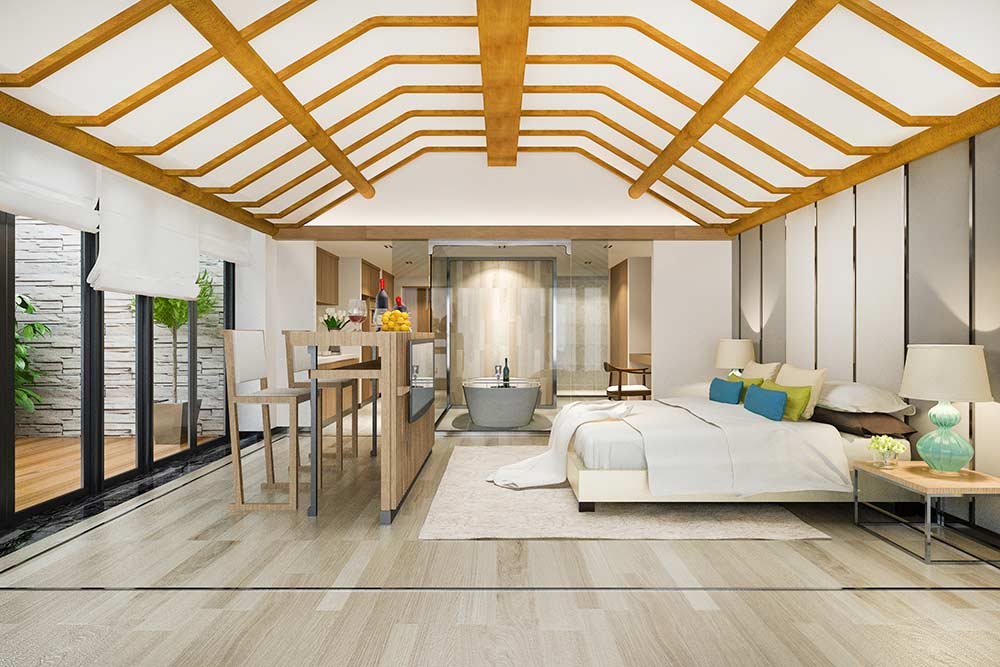In Australia, particularly over the last couple of years, we’ve been building houses at a rapid pace. Concerns, as highlighted in this article from Domain, have been raised that the vast majority of the new homes are already outdated. We’re not keeping up with countries in Asia and Europe when it comes to building future-proof homes.
Future proof homes anticipate construction and technology trends, staying ahead of obsolescence through clever and forward-thinking design and facilities. Homes like this stay relevant and in demand because they adapt to the future lifestyle of their residents. You could say that their price is also future proofed!
So how do you future proof a home? If you’re doing a new build or a renovation, there are a number of things you should think about. According to Professor Alan March, from the University of Melbourne’s school of design planning, Australia’s housing stock is out of date because of the structural problems with a property market that views homes as a vehicle for wealth creation rather than for good shelter.
The key then is to go for comfort and adaptability, to include features that help create a home that you enjoy living in, because living there is easy. And in future-proofed homes, the living is easy for many, many years to come.
Here are some ways to achieve that.
Energy Efficiency and Eco Friendliness
Incorporating features that minimise your eco-footprint is more than just a trend, it’s becoming imperative in these times of climate change. Heating and cooling are the biggest energy suckers in a property, so if these systems are archaic and outdated they will be creating massive energy inefficiency. Spending some money on updating them is a worthwhile investment.
When updating your air-conditioning think about multi-split systems. These ensure each room has its own air that isn’t recycled through the whole house. In our post-pandemic era, this is appealing for people used to having to isolate in a bedroom to prevent other family members getting sick.
Insulation is also key. Using modern spray insulation ensures cracks are sealed better and it’s also less toxic. Double glazed windows and draught proofing gaps around doors will also improve insulation.
Another popular addition are solar power systems. These aren’t just good for the environment, they can save homeowners significant amounts of money as they inject excess energy back into the grid.
Other energy efficient options include low flow toilets and water-efficient shower heads. Remember that electric cars are also on the rise, so including a charging station for them is a good idea.
Smart Homes
Smart technology in homes not only makes them easier to live in, it prepares them for technology upgrades in the future. Smart homes have automated systems in them that allow residents to control things like security, lighting and electrical appliances.
Energy consumption can be monitored and optimized via smart systems, enhancing the environmental efficiency of the home and saving on energy costs. Other systems can detect water leaks and shut down supply if there’s a problem or detect smoke or toxic fumes and alert you via a mobile device.
When building a new home, its wise to think of how you can accommodate future smart home trends. Adding extra conduit for wiring in of smart features in years to come will make it more appealing to modern, tech-savvy generations.
Accommodate Multiple Generations
Older generations will use space differently, so if you have a home that is adaptable and flexible to their changing needs it’s going to be in high demand. When building or updating your home, think about how senior citizens will use that space in the future. Subtle ramps for wheelchairs, oversized showers, strategic bars for standing support and things like that won’t go unnoticed by multi-generational families looking for a home to buy.
The Remote Work Revolution
Covid lockdowns made remote work unavoidable, and today it is very much a part of how we go about our jobs. That, coupled with the growing amount of people who run their businesses from home, makes including a study or office space essential.
It’s not just about building an extra room though. You need to be strategic in how you do it. It needs to be more useful that just a study. You can interchange it with a guest bedroom or rumpus room or include smart storage options to increase the storage space in your home. You could use foldaway desks or beds to increase the floorspace available.
It’s a good opportunity to be creative and think about how future generations will best make use of that room.
We hope you’ve enjoyed these tips on how to future proof your home, and we hope you can input some of them into your next build or renovation. If you have any questions or want to chat about anything real estate related, please get in touch with The Henry Wong Team®. We’d love to help.




